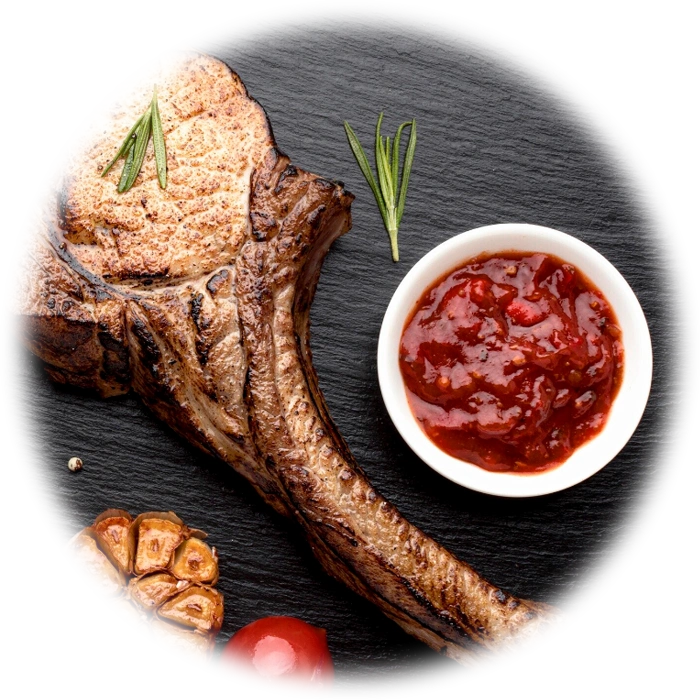
Nutritional properties of Steak sauce
Energy :
None Kcal / 100g
Category : Spices & Sauces
Group : Sauces
Composition And Nutritional Value :Steak sauce is a tangy, flavorful condiment typically used to enhance the taste of grilled or pan-seared steaks. It is made from a combination of ingredients such as tomato paste, vinegar, worcestershire sauce, spices, sugar, and molasses. Some variations may include garlic, onions, and mustard. The sauce tends to be low in calories but can contain sodium due to the presence of salt and soy sauce. Sugar or corn syrup is often added for sweetness, and some versions include high-fructose corn syrup. The main nutritional benefit of steak sauce comes from the spices and seasonings that offer antioxidant properties, while the tomatoes and vinegar provide a bit of vitamin C and acidity, which helps balance the richness of steaks.
Health Benefits :
Rich Flavor with Minimal Calories: Steak sauce is typically low in calories, making it an ideal condiment for people watching their calorie intake, provided it is used in moderation.
Antioxidant Properties: The tomato paste and spices used in steak sauce, such as garlic, onion, and mustard, provide small amounts of antioxidants, which may support overall health by reducing oxidative stress.
Improved Digestion: The inclusion of vinegar in steak sauce may aid digestion. Vinegar has been shown to have antimicrobial properties and may help break down food in the digestive system.
Taste Enhancement: The use of vinegar, soy sauce, and worcestershire sauce in steak sauce not only enhances flavor but can also help make meals more satisfying, potentially leading to reduced overall food consumption when used as a flavorful addition to lean meats.
Culinary Uses : Steak sauce is primarily used as a condiment to enhance the flavor of grilled or cooked meats, especially steaks. It pairs well with beef, pork, and even chicken, offering a savory, sweet, and tangy contrast to the rich, savory flavors of grilled meats. Steak sauce can also be used in marinades to tenderize meat and infuse it with flavor before cooking. It is sometimes incorporated into sauces or dips for appetizers, particularly when served with roasted vegetables, fries, or even burgers. Additionally, steak sauce can be used in BBQ recipes, combined with other sauces to create complex, layered flavors.
Types :
Classic Steak Sauce: The traditional version, often containing tomato paste, vinegar, spices, and a bit of sweetness, providing a balanced flavor that complements grilled steaks.
Spicy Steak Sauce: A variation of steak sauce that includes additional heat from ingredients like cayenne pepper, hot sauce, or chili flakes. This version adds a spicy kick to complement the rich, umami flavors of the meat.
Smoky Steak Sauce: This type of steak sauce incorporates smoked paprika or liquid smoke, creating a smoky, charred flavor that pairs well with grilled meats.
Low-Sodium Steak Sauce: A version of steak sauce that has reduced salt content, suitable for those who need to monitor their sodium intake.
Shopping And Storage Tips :
Selecting Steak Sauce: When buying steak sauce, look for versions with simple ingredients and minimal artificial additives. Opt for products with natural sweeteners such as honey or molasses instead of high-fructose corn syrup.
Storage: Unopened steak sauce should be stored in a cool, dry place, such as a pantry or cupboard. After opening, steak sauce should be refrigerated to maintain freshness and prevent spoilage.
Preserving Freshness: Ensure that the lid is tightly sealed to prevent air from entering the bottle, which could cause the sauce to spoil. Steak sauce generally lasts several months in the fridge due to its high vinegar and salt content, which act as preservatives.

